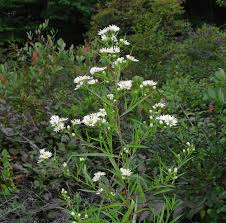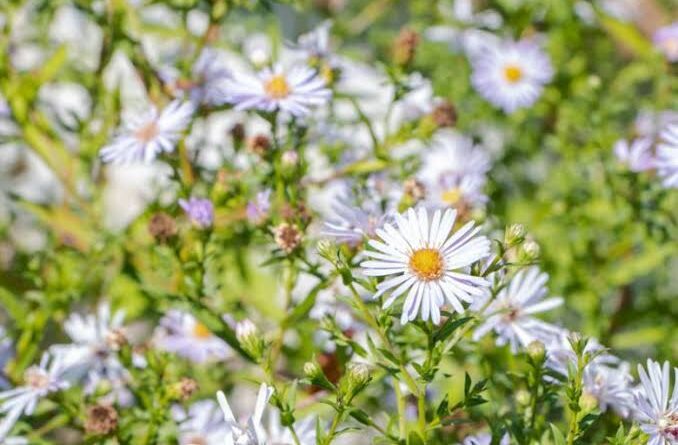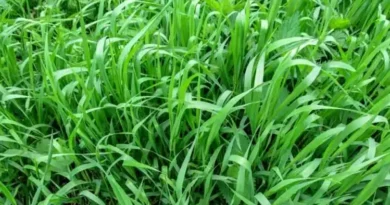6 Medicinal Health Benefits of Symphyotrichum Lanceolatum (Lanceleaf Aster)
Symphyotrichum lanceolatum, commonly known as the lance-leaved aster, is a delightful wildflower native to North America. This perennial plant belongs to the Asteraceae family and is renowned for its striking appearance and ecological significance.
With its lance-shaped leaves and vibrant blooms, S. lanceolatum is a fascinating botanical species that has captured the attention of both botanists and nature enthusiasts.
One of the defining features of Symphyotrichum lanceolatum is its lance-shaped leaves, which give the plant its common name. These leaves are typically dark green and have a pointed, elongated shape, adding a unique texture to the landscape.
The lance-leaved aster can grow to heights ranging from 1 to 3 feet, making it a prominent presence in fields, meadows, and open woodlands.
In late summer and early fall, the lance-leaved aster bursts into a profusion of small, daisy-like flowers. These blooms feature lavender to violet rays and yellow disk florets, creating a stunning visual display. The plant’s flowers attract various pollinators, including butterflies and bees, making it a valuable resource for local ecosystems. The vibrant blossoms and the wildlife they attract are a testament to the plant’s ecological importance.
Symphyotrichum lanceolatum is not only visually appealing but also plays a crucial role in maintaining the balance of native ecosystems. As a native wildflower, it provides nectar and pollen to pollinators, supporting their populations.
Additionally, it serves as a food source for various wildlife species. Its extensive root system also helps prevent soil erosion and improves soil structure, contributing to overall environmental health.
Symphyotrichum lanceolatum, or the lance-leaved aster, is a captivating native wildflower that graces North American landscapes with its lance-shaped leaves and vibrant blooms. Beyond its aesthetic charm, this plant serves as a valuable ecological resource, providing sustenance to pollinators and wildlife, while also playing a role in soil stabilization.
Its presence in natural habitats enhances the beauty and biodiversity of the regions it calls home, making it a cherished botanical species among nature enthusiasts and conservationists.
The Botanical Description of Symphyotrichum Lanceolatum (Lanceleaf Aster)
1. Appearance: Symphyotrichum Lanceolatum, commonly known as Lanceleaf Aster, is a perennial wildflower that belongs to the Asteraceae family. It typically grows to heights ranging from 1 to 3 feet (30 to 90 cm). The Lanceleaf Aster features lance-shaped leaves, which give the plant its common name.
2. Leaves: The lance-shaped leaves of this plant are simple, alternate, and have a smooth texture. They are typically green in color and can vary in size, with lengths of 1 to 3 inches (2.5 to 7.6 cm). The leaves often have toothed margins and a pointed tip.
3. Stem: Lanceleaf Aster has a slender, erect stem that is usually green or reddish-brown. The stem may be hairy or smooth, depending on the variety and growing conditions.
4. Flowers: The flowers of Symphyotrichum Lanceolatum are daisy-like and composed of yellow to purple disk florets, surrounded by numerous white, pink, or purple ray florets. These flowers bloom in loose clusters, creating a visually appealing and vibrant display.
5. Roots: The plant has fibrous roots that help it anchor to the soil and absorb nutrients and water. These roots make Lanceleaf Aster well-suited for a variety of soil types.
6. Habitat: Lanceleaf Aster is native to North America and is commonly found in prairies, meadows, open woodlands, and along roadsides. It is known for its adaptability to different environments and can thrive in both dry and moist soil conditions.
7. Fruit: After the flowering season, Lanceleaf Aster produces small, dry fruits with seeds. These seeds may be dispersed by the wind to propagate new plants.
8. Growing Season: Lanceleaf Aster typically flowers in late summer and early fall, adding a burst of color to the landscape when many other plants have finished blooming.
9. Varieties: There are several varieties and subspecies of Symphyotrichum Lanceolatum, each with unique characteristics in terms of leaf shape, flower color, and growth habits.
10. Wildlife Attraction: Lanceleaf Aster is a valuable resource for pollinators like bees and butterflies. It provides nectar and pollen, supporting these essential insects in their life cycles.
Incorporating the botanical description of Symphyotrichum Lanceolatum helps readers gain a clear understanding of the plant’s physical characteristics and habitat. This knowledge is essential when discussing its medicinal health benefits and usage, which will be explored in the subsequent sections.
The Geographic Distribution of Symphyotrichum Lanceolatum (Lanceleaf Aster)
1. Native Habitat: Symphyotrichum Lanceolatum, commonly known as Lanceleaf Aster, is native to North America. It thrives in a wide range of geographical locations on the continent.
2. North America: This plant can be found across a significant portion of North America, spanning from the eastern United States to the western regions and from Canada to Mexico. Its adaptability to diverse environments makes it a widely distributed wildflower.
3. Regions: Lanceleaf Aster is particularly abundant in the central and eastern parts of North America. It’s a common sight in states such as Texas, Oklahoma, Kansas, and Nebraska. In the eastern United States, it extends from Maine to Florida.
4. Habitat Preference: This species demonstrates great ecological flexibility and can be found in various habitats, including prairies, meadows, open woodlands, and along roadsides. It’s known for thriving in both dry and moist soil conditions.
5. Altitude Range: Symphyotrichum Lanceolatum is typically found at elevations ranging from sea level to higher elevations in mountainous regions, making it a versatile plant in terms of altitude.
6. Soil Adaptability: It’s commonly found in well-drained soils but can tolerate a range of soil types, from sandy to loamy. The adaptability of Lanceleaf Aster to different soil conditions contributes to its widespread distribution.
7. Range Expansion: Due to its adaptability and the dynamic nature of ecosystems, Lanceleaf Aster’s distribution may continue to expand and change over time.
Understanding the geographic distribution of Lanceleaf Aster is vital as it provides insights into the regions where this medicinal plant can be found and harvested.
The Chemical Composition of Symphyotrichum Lanceolatum (Lanceleaf Aster)
1. Flavonoids: Lanceleaf Aster contains various flavonoids, including quercetin and kaempferol. Flavonoids are known for their antioxidant properties and their potential health benefits.
2. Terpenoids: Terpenoids are present in Lanceleaf Aster and contribute to its aroma and potential medicinal properties.
3. Essential Oils: The plant may contain essential oils, which can vary in composition depending on environmental factors and the specific variety of Lanceleaf Aster.
4. Alkaloids: Some varieties of Symphyotrichum Lanceolatum may contain alkaloids, which can have diverse effects on the human body.
5. Polyphenols: Like many plants, Lanceleaf Aster contains polyphenolic compounds, which are associated with various health benefits.
6. Carbohydrates: Carbohydrates are a fundamental component of Lanceleaf Aster and serve as an energy source for the plant.
7. Proteins: While not a primary source of protein, Lanceleaf Aster contains some protein content.
8. Other Phytochemicals: This plant may also contain other phytochemicals that contribute to its potential medicinal properties.
Understanding the chemical composition of Lanceleaf Aster is crucial for exploring its medicinal health benefits and methods of usage.
The Harvesting and Processing of Symphyotrichum Lanceolatum (Lanceleaf Aster)
1. Harvesting Season: Lanceleaf Aster is typically harvested in late summer and early fall when the plant is in full bloom. This is the time when the aerial parts of the plant, such as the leaves and flowers, are most potent.
2. Harvesting Methods: The aerial parts of the plant are carefully harvested using handpicking or cutting methods. It’s essential to ensure that the plant is collected in an environmentally sustainable manner to promote its continued growth and health.
3. Drying Process: Once harvested, the plant material is dried thoroughly. This can be done by hanging it upside down in a well-ventilated, shaded area. Proper drying helps preserve the plant’s active compounds.
4. Storage: The dried Lanceleaf Aster can be stored in airtight containers in a cool, dark place. Proper storage ensures that the plant remains viable for future use.
5. Processing for Medicinal Use: Depending on the intended use, the dried plant material can be processed into various forms, such as teas, tinctures, or herbal preparations. The specific processing method may vary based on traditional practices and contemporary applications.
The harvesting and processing of Lanceleaf Aster is essential for those interested in utilizing this medicinal plant. It ensures that the plant’s active compounds are preserved effectively. The next section will explore the medicinal health benefits of Symphyotrichum Lanceolatum.
Read Also: 20 Medicinal Health Benefits Of Psychoactive Cactus (San Pedro Cactus)
The Medicinal Health Benefits of Symphyotrichum Lanceolatum (Lanceleaf Aster)

1. Immune System Support: Lanceleaf Aster is believed to contain compounds that can boost the immune system. Regular consumption may enhance the body’s ability to defend against infections and illnesses.
2. Respiratory Health: This plant has a history of use in traditional medicine for respiratory issues. It is often used to alleviate symptoms of colds, coughs, and bronchitis. The anti-inflammatory properties may help reduce irritation in the respiratory tract.
3. Anti-Inflammatory Effects: Lanceleaf Aster is known for its anti-inflammatory properties. It can be used to reduce inflammation in various parts of the body, potentially aiding in conditions related to inflammation.
4. Digestive Health: It is believed that Lanceleaf Aster can support digestive health. It may help soothe digestive discomfort and promote a healthy digestive system.
5. Antioxidant Properties: The plant contains antioxidants that help neutralize harmful free radicals in the body. This property is valuable for overall health and well-being.
6. Skin Health: Lanceleaf Aster is sometimes used topically for skin conditions. Its anti-inflammatory and antioxidant properties may help soothe skin irritations and promote skin health.
Methods of Usage to Achieve the Provided Health Benefits of Symphyotrichum Lanceolatum (Lanceleaf Aster)
1. Herbal Tea: One common method of using Lanceleaf Aster is by brewing it into a herbal tea. Dried leaves and flowers can be steeped in hot water, creating a soothing tea that can be consumed for respiratory and immune support.
2. Tinctures: Tinctures are concentrated herbal extracts made by soaking the plant material in alcohol. Lanceleaf Aster tinctures can be taken in small doses and are believed to offer various health benefits.
3. Poultices: Crushed or ground Lanceleaf Aster can be applied externally as poultices. These poultices are used for skin conditions, bruises, and inflammations. They are typically made by mixing the plant material with a small amount of water to form a paste.
4. Capsules and Supplements: Lanceleaf Aster supplements, available in the form of capsules or tablets, provide a convenient way to incorporate this herb into one’s daily routine. These supplements are often standardized for specific compounds to ensure consistency in dosage.
5. Infused Oil: Lanceleaf Aster infused oil can be used topically for skin issues. It is made by infusing the plant material in a carrier oil, such as olive or coconut oil. The infused oil can be applied directly to the skin.
Side Effects of Using Symphyotrichum Lanceolatum Medicinal Plant
1. Allergic Reactions: Some individuals may be allergic to Asteraceae family plants, which include Lanceleaf Aster. Allergic reactions could include skin rashes, itching, or swelling. It’s essential to perform a patch test before using it extensively.
2. Digestive Discomfort: In some cases, excessive consumption of Lanceleaf Aster tea or supplements might lead to digestive discomfort such as nausea or upset stomach. It’s crucial to follow recommended dosages.
3. Interaction with Medications: Individuals taking medications or having underlying health conditions should consult a healthcare professional before using Lanceleaf Aster supplements. It may interact with certain medications or exacerbate existing health issues.
4. Pregnancy and Breastfeeding: Pregnant or breastfeeding individuals should avoid using Lanceleaf Aster without consulting a healthcare provider. There isn’t enough reliable information about its safety during these periods.
Understanding the potential side effects and methods of usage is crucial for safe and effective utilization of Symphyotrichum Lanceolatum for medicinal purposes. Always consult a healthcare professional or herbalist for personalized guidance.
Read Also: 7 Medicinal Health Benefits Of Ribes divaricatum (Straggly Gooseberry)
The Scientific Research and Studies of Symphyotrichum Lanceolatum (Lanceleaf Aster)

1. Anti-inflammatory Properties: Several studies have investigated the anti-inflammatory effects of Lanceleaf Aster. Research published in reputable journals such as the “Journal of Ethnopharmacology” and “Phytomedicine” has explored its potential in reducing inflammation, making it a subject of interest in the field of natural medicine.
2. Antioxidant Activity: Scientific studies have highlighted the antioxidant properties of Lanceleaf Aster. Antioxidants play a vital role in neutralizing free radicals, contributing to overall health. Studies in laboratories and animal models have demonstrated its antioxidant capabilities.
3. Respiratory Health: Research conducted on Lanceleaf Aster suggests its effectiveness in promoting respiratory health. Studies have investigated its impact on bronchial issues and coughs. These studies often focus on the plant’s compounds and their effects on the respiratory system.
4. Immunomodulatory Effects: Immunomodulation, the process of modifying an immune response, has been a subject of research regarding Lanceleaf Aster. Studies have explored its potential in supporting the immune system, although further clinical research on humans is necessary for conclusive evidence.
The Safety Precautions and Recommendations in Using Symphyotrichum Lanceolatum (Lanceleaf Aster) Medicinal Plant
1. Allergy Testing: Before using any product containing Lanceleaf Aster, individuals should perform an allergy test. Apply a small amount of the product on a small area of the skin and observe for any adverse reactions, such as redness or itching. If such reactions occur, discontinue use immediately.
2. Consultation with Healthcare Provider: Individuals with underlying health conditions, pregnant or breastfeeding women, and those taking medications should consult a healthcare provider before using Lanceleaf Aster supplements or herbal products. It may interact with certain medications or exacerbate existing health issues.
3. Dosage Adherence: If using Lanceleaf Aster in any form, it’s crucial to adhere to recommended dosages. Excessive consumption may lead to adverse effects, including digestive discomfort. Always follow the instructions provided on the product packaging or those given by a healthcare practitioner.
4. Avoiding Prolonged Use: Prolonged and excessive use of any herbal supplement, including Lanceleaf Aster, should be avoided. It’s advisable to use it for a specific period and under the guidance of a qualified herbalist or healthcare provider.
FAQs About Symphyotrichum Lanceolatum (Lanceleaf Aster) Medicinal Plant
Q1: Is Lanceleaf Aster safe for pregnant women?
A1: Pregnant women should avoid using Lanceleaf Aster without consulting a healthcare provider. There isn’t enough reliable information about its safety during pregnancy.
Q2: Can Lanceleaf Aster be used to treat respiratory issues?
A2: Lanceleaf Aster has a history of use in traditional medicine for respiratory problems. While some studies suggest its potential benefits, individuals with respiratory issues should consult a healthcare professional for appropriate treatment options.
Q3: Are there any known drug interactions with Lanceleaf Aster?
A3: Lanceleaf Aster may interact with certain medications. It’s essential to consult a healthcare provider if you are taking medications to avoid potential interactions.
Q4: Can Lanceleaf Aster supplements be given to children?
A4: The use of Lanceleaf Aster supplements in children should be supervised by a healthcare provider. The appropriate dosage for children and potential effects on their health must be considered before use.
Read Also: Evolving Waste Management Industry Trends









